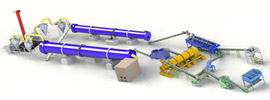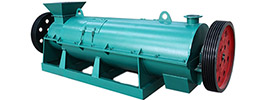1. Do not mix with ammonium carbonAfter urea is applied to the soil, it has to be converted into ammonia before it can be absorbed by crops, and its conversion rate is much slower in alkaline conditions than in acidic conditions. Ammonium carbon is applied to the soil is alkaline reaction, pH 8.2 ~ 8.4. Farmland mixed with ammonium carbon and urea, will make the conversion of urea into ammonia greatly slowed down, easy to cause the loss of urea and volatile loss. Therefore, urea and ammonium carbon should not be mixed or applied at the same time.
2. Avoid surface spreadingUrea scattered in the ground, room temperature to be used after 4 to 5 days of conversion, most of the nitrogen is easy to volatilize in the ammonia process, the actual utilization rate is generally only about 30%, if the scattering in alkaline soil and organic matter content of the soil, the loss of nitrogen will be faster and more.
And urea shallow application, easy to be consumed by weeds. Urea deep application, melting fertilizer in the soil, so that the fertilizer in the moist soil layer, conducive to the effectiveness of fertilizer. As a follow-up fertilizer should be applied in the hole next to the seedling or in the ditch on the side of the seedling, the depth should be about 10 to 15cm. In this way, the urea is concentrated in the dense layer of the root system, which is easy for the crop to absorb and use. Tests have shown that deep application than shallow application can improve the utilization of urea 10% to 30%.
3. Do not use as seed fertilizerUrea in the production process, often produce a small amount of diurea, when the diurea content of more than 2% will be toxic to seeds and seedlings, so the urea into the seeds and seedlings, will denature the protein, affecting seed germination and seedling growth, so it is not suitable for seed fertilizer. If it must be applied as seed fertilizer, to avoid seed, fertilizer contact, and control the amount.
4. Do not apply water immediately afterUrea is an amide state nitrogen fertilizer, it has to be converted into ammonia nitrogen to be absorbed by the crop root system, the conversion process due to soil, moisture and temperature and other conditions, there are long and short time, generally after 2 to 10 days to complete, if applied immediately after irrigation and drainage or dry land before heavy rain, urea will be dissolved in water and lost. General summer and autumn season should be applied after 2 to 3 days to irrigate water, winter and spring season should be applied after 7 to 8 days to irrigate water.
5. Do not mix with alkaline fertilizers or apply at the same timeUrea must be converted into ammonia nitrogen after application to produce fertilizer effect, and ammonia nitrogen in alkaline conditions, most of the nitrogen will become ammonia evaporated, so urea can not be mixed with lime, grass ash, calcium and magnesium phosphate fertilizer and other alkaline fertilizers or applied at the same time. Generally speaking, in summer and autumn, urea and alkaline fertilizers should be staggered 3 to 4 days of application, winter and spring should be staggered 7 to 8 days.
 6. Do not apply on celery
6. Do not apply on celeryCelery needs a lot of nitrogen fertilizer during the whole growth period, but not urea. Because of the application of
urea, celery fiber increased thickening, plant aging, slow growth, and edible with a bitter taste, poor quality. Ammonium carbonate, ammonia and organic fertilizers are suitable for celery to improve quality.
7. Avoid using too muchUrea contains high nitrogen, the amount of application should not be too large, so as not to cause unnecessary waste and "fertilizer damage". Generally 5-15 kg per mu, 15-20 kg per mu in paddy fields. Apply too much, before the transformation into ammonium carbon can not be absorbed by the soil, easy to be lost by rain, and easy to hurt the crop. At the same time, too much urea, most of it is lost into the groundwater, will lead to nitrogen pollution of water bodies, resulting in the deposition of nitrite, seriously affecting the safety of humans and animals.
8. Avoid high concentration of foliar sprayingIn all nitrogen fertilizer inside, urea is the most ideal foliar fertilizer. Spraying urea, the amount and speed of protein synthesis in the crop exceeds other nitrogen fertilizers. However, foliar spraying should not be applied with too high concentration of urea solution, otherwise it will burn the leaves and also poison the plant. Usually for corn, wheat, rice, cotton concentration of 2% is appropriate; vegetables, melons and fruits to 0.5-1% is more appropriate; fruit trees to 0.5-1.5% is appropriate.
9. Do not apply too lateApply urea too late, is not conducive to the effectiveness of fertilizer, easy to cause crop greed late, so generally should be applied 4 to 7 days earlier than other nitrogen fertilizer application.
10. Avoid single applicationThe active ingredient of urea is nitrogen, a single nutrient, and crop growth and development requires a variety of nutrients. Therefore, urea should be applied with organic fertilizers and phosphorus, potash, etc., to meet the needs of crops for a variety of nutrients. And urea and organic fertilizer and chemical fertilizer reasonable mixed application, but also can effectively improve its utilization rate. Such as urea and calcium superphosphate mixed application, can make the unstable ammonium bicarbonate into a stable ammonium phosphate, so that the natural volatility of nitrogen is greatly reduced. Urea mixed with organic fertilizers, organic acids produced in the fermentation process, can also accelerate the conversion and decomposition of urea, quickly absorbed by the crop, improve the utilization rate of urea.
 Send us a Email
Send us a Email Wulong Industrial Cluster
Wulong Industrial Cluster Have any question?
Have any question?




















